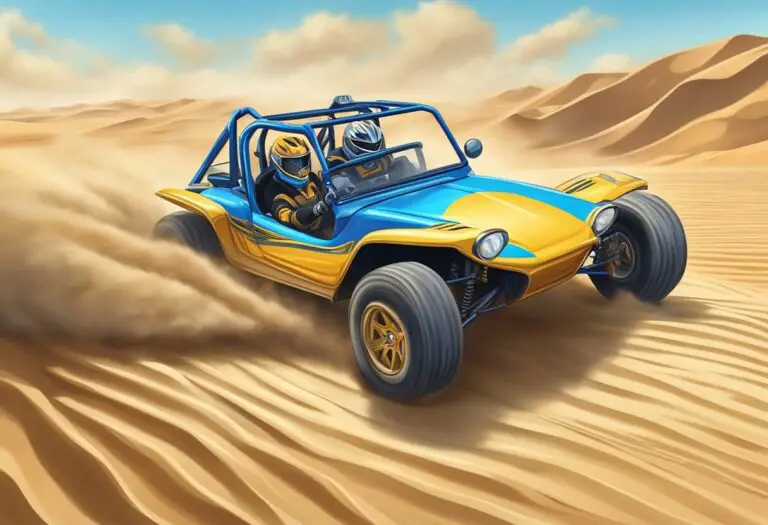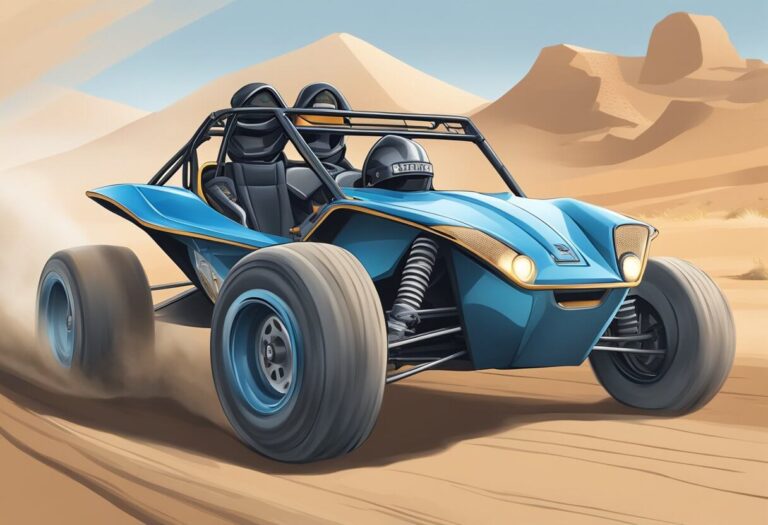Dune Buggy in the Sand: A Guide to Off-Roading Fun
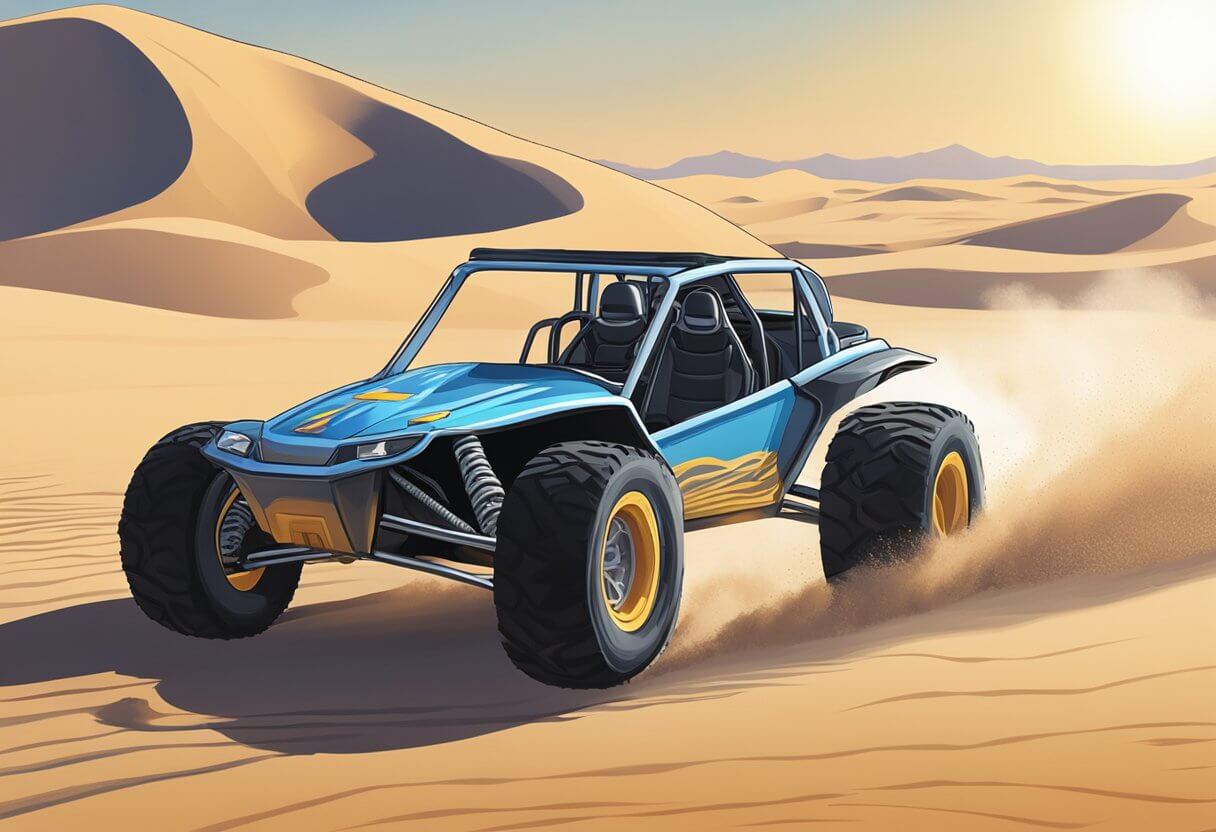
Dune buggies are off-road vehicles that are specifically designed for use on sand dunes, beaches, or other desert-like terrains. They are lightweight, open-air, and often have oversized wheels and tires to provide maximum traction on sand. Dune buggies are a popular choice for recreational activities such as sand dune racing, beach cruising, and desert exploration.
The history of dune buggies dates back to the 1960s when people started modifying Volkswagen Beetles to create off-road vehicles that were capable of navigating sand dunes. Over time, dune buggies evolved into purpose-built vehicles that were designed specifically for off-road use. Today, dune buggies come in a variety of shapes and sizes, with different features and capabilities to suit different needs and preferences.
Key Takeaways
- Dune buggies are off-road vehicles that are designed for use on sand dunes, beaches, or other desert-like terrains.
- The history of dune buggies dates back to the 1960s when people started modifying Volkswagen Beetles to create off-road vehicles.
- Today, dune buggies come in a variety of shapes and sizes, with different features and capabilities to suit different needs and preferences.
History of Dune Buggies
Origin and Evolution
The origin of dune buggies can be traced back to the 1950s and 1960s when people started modifying Volkswagen Beetles to make them suitable for off-road driving. The first dune buggies were created by removing the body of the Beetle and replacing it with a custom-built fiberglass body that was designed to be lightweight and aerodynamic. The engine was moved to the rear of the vehicle to improve traction on sand dunes.
The popularity of dune buggies grew quickly, and by the 1970s, they had become a common sight on beaches and sand dunes across the United States. The design of dune buggies continued to evolve, with manufacturers introducing new features such as roll cages and improved suspension systems.
Cultural Impact
Dune buggies have had a significant cultural impact, particularly in the United States. They are often associated with the counterculture of the 1960s and 1970s and were frequently featured in movies and television shows of the era. The popularity of dune buggies also led to the creation of off-road racing events, such as the Baja 1000, which is still held annually in Mexico.
Today, dune buggies remain a popular recreational vehicle for people who enjoy off-road driving. They are often used on beaches and sand dunes, but can also be driven on other types of terrain. Many people choose to build their own dune buggies, using kits or plans that are available online. Others prefer to purchase pre-built vehicles from manufacturers.
Dune Buggy Design
Chassis and Body
The design of a dune buggy is typically characterized by a tubular frame chassis that is lightweight and durable. This design allows for greater flexibility and maneuverability when driving on sand dunes. The body of the dune buggy is usually open-air, providing a sense of freedom and adventure while driving. The Meyers Manx, considered the original and most iconic dune buggy, was built by modifying a Volkswagen Beetle, which was a popular affordable donor car at the time.
Engine and Performance
The engine of a dune buggy is usually situated in the back, providing better weight distribution and traction on the rear wheels. The engine is typically a high-performance, air-cooled four-cylinder engine with a displacement of around 1,600cc. This engine provides enough power to propel the dune buggy over sand dunes and other off-road terrain. Additionally, the dune buggy usually features a high-performance exhaust system that provides a distinctive sound and improves engine performance.
Safety Features
While dune buggies are designed for off-road use, they still need to be safe and reliable. Most dune buggies feature a roll cage that provides protection in the event of a rollover. Additionally, the dune buggy is equipped with a set of sturdy, off-road tires that provide good grip and traction on sand dunes. The brakes are usually high-performance disc brakes that provide excellent stopping power even in difficult terrain. Finally, the dune buggy features a set of comfortable, high-back bucket seats that provide good support and protection for the driver and passengers.
Dune Buggy Types
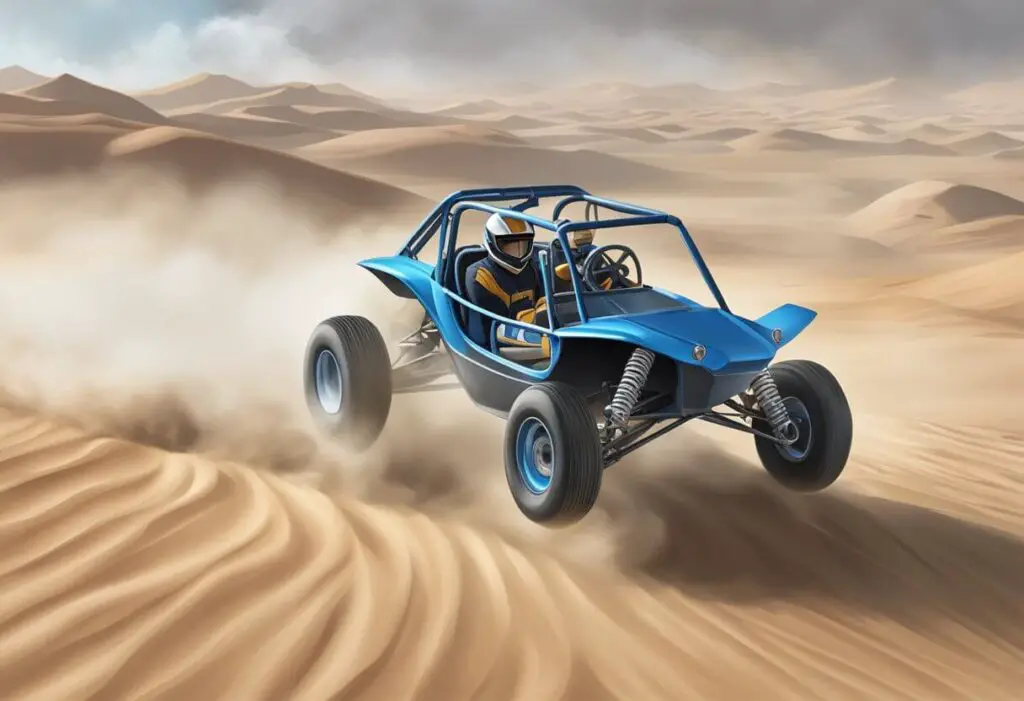
When it comes to dune buggies, there are two main types: street legal and off-road. Each type has its own unique features and benefits.
Street Legal Buggies
Street legal dune buggies are designed to be driven on public roads and highways. They are equipped with features such as headlights, turn signals, and seat belts to comply with safety regulations. These buggies are typically smaller and lighter than traditional cars, making them easier to maneuver and park in tight spaces.
One popular example of a street legal dune buggy is the Meyers Manx. This classic buggy was first introduced in the 1960s and is still in production today. It features a fiberglass body, a Volkswagen engine, and a simple yet stylish design that has become iconic in the world of dune buggies.
Off-Road Buggies
Off-road dune buggies are designed for use on rough terrain, such as sand dunes or rocky trails. They are typically larger and more powerful than street legal buggies, with features such as reinforced suspension and high-performance engines. Off-road buggies also often have oversized wheels and tires to provide better traction on uneven surfaces.
One popular example of an off-road dune buggy is the Sandrail. This type of buggy is specifically designed for use in sand dunes and features a lightweight frame, a powerful engine, and a long-travel suspension system for maximum control and maneuverability.
Overall, whether you’re looking for a street legal or off-road dune buggy, there are plenty of options available to suit your needs and preferences.
Driving Techniques
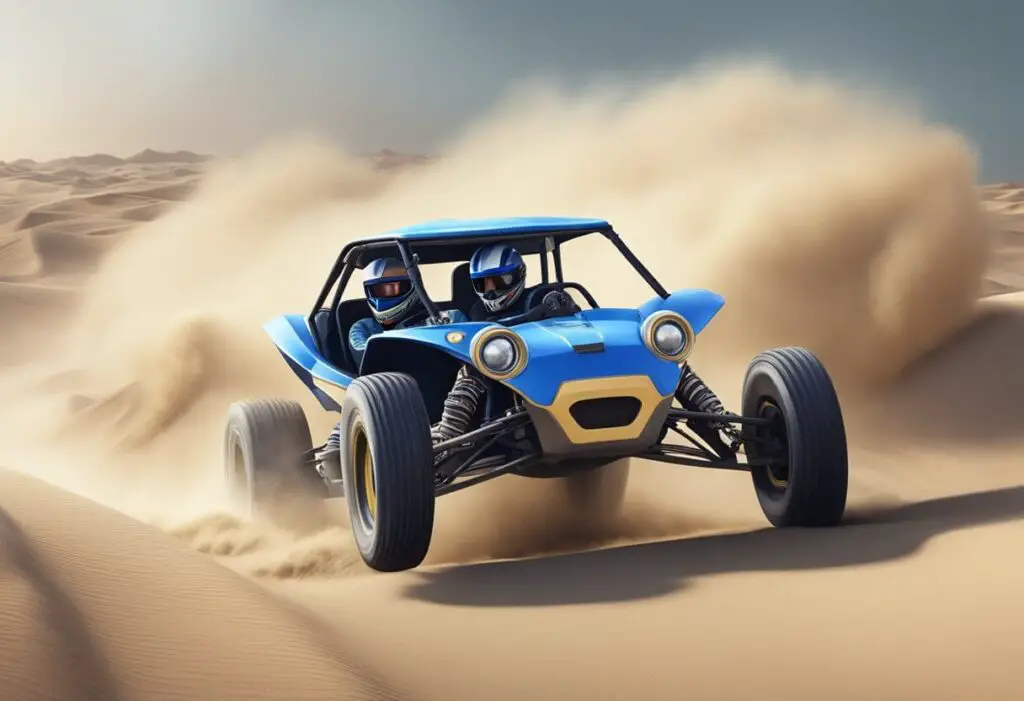
Navigating Sand Dunes
Driving a dune buggy in the sand requires a different set of skills than driving on regular roads. One of the most important skills to learn is how to navigate sand dunes. It is crucial to maintain momentum while driving up a dune, as losing momentum can cause the vehicle to get stuck in the sand.
To maintain momentum, drivers should accelerate before reaching the base of the dune and then maintain a steady speed as they climb the dune. It is also important to keep the wheels straight to prevent the vehicle from sliding sideways.
When driving down a dune, it is important to maintain a slow and steady speed to prevent the vehicle from flipping over. Drivers should also keep their wheels straight and avoid sudden movements that could cause the vehicle to lose control.
Handling and Control
Dune buggies are designed to handle sand dunes, but drivers still need to know how to control the vehicle in these conditions. One important technique is to shift the weight of the vehicle while driving. This can be done by leaning forward or backward to help the vehicle climb or descend a dune.
Another important technique is to use the brakes sparingly. Braking too hard can cause the wheels to lock up and the vehicle to slide out of control. Instead, drivers should use a light touch on the brakes and rely on engine braking to slow down the vehicle.
Finally, drivers should always be aware of their surroundings and drive defensively. Sand dunes can be unpredictable, and drivers should be prepared for sudden changes in the terrain. By staying alert and following these driving techniques, drivers can safely enjoy the thrill of dune buggy driving in the sand.
Maintenance and Care
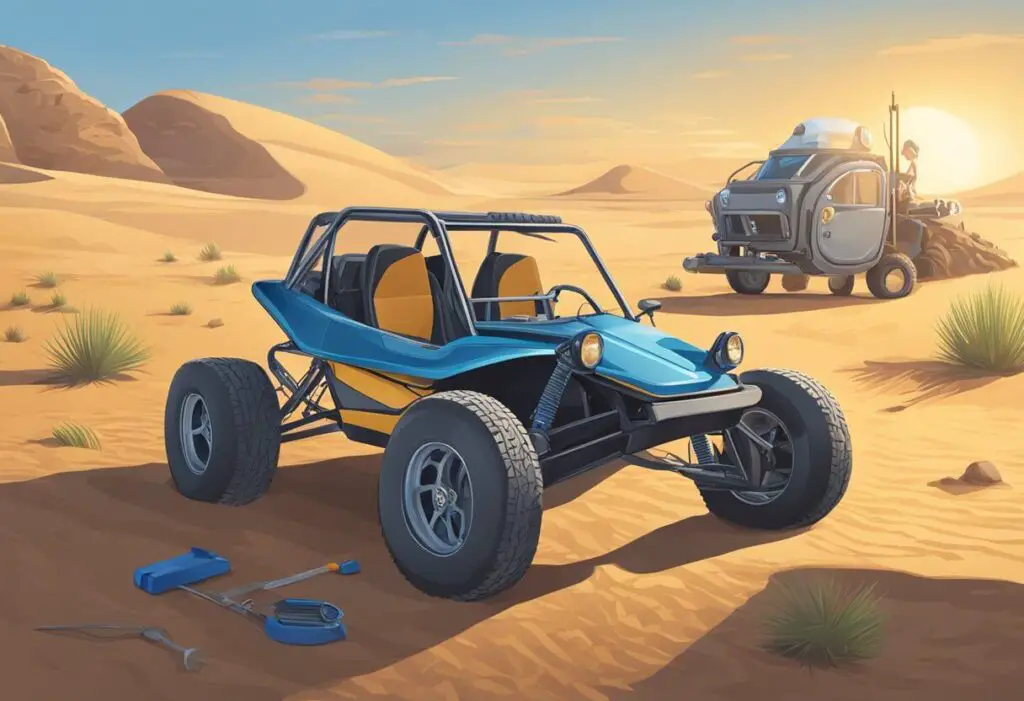
Regular Servicing
To keep a dune buggy running smoothly, regular servicing is essential. This includes oil changes, air filter replacement, and spark plug replacement. It is also important to check the brakes, suspension, and steering components for any signs of wear or damage. Regular servicing will help to prevent major breakdowns and keep the dune buggy in top condition.
Sand Exposure Management
Sand can be very damaging to a dune buggy’s engine and other components. It is important to take steps to manage sand exposure to prevent damage and ensure longevity. Here are some tips for managing sand exposure:
- Use a high-quality air filter to prevent sand from entering the engine.
- Install a skid plate to protect the underside of the dune buggy from sand and other debris.
- Rinse off the dune buggy after each use to remove any sand and salt that may have accumulated.
- Apply a protective coating to the dune buggy’s exterior to prevent sand from sticking to the paint and causing damage.
By following these tips, dune buggy owners can help to prevent damage and keep their vehicles running smoothly for years to come.
Legal Considerations
Regulations by Region
Before taking a dune buggy out on the sand, it is important to know the regulations that apply to the area. Regulations vary by region, so it is crucial to research the specific area where you plan to ride. Some areas may require a permit or have restrictions on the type of vehicle that is allowed on the sand. It is also important to be aware of any speed limits or noise restrictions that may be in place.
Environmental Concerns
When riding a dune buggy on the sand, it is essential to be mindful of the environment. Dune buggies can cause damage to the sand dunes and the surrounding ecosystem if not used responsibly. It is important to stay on designated trails and avoid driving on vegetation or sensitive areas. Additionally, it is important to properly dispose of any trash and avoid leaving any trace behind.
Be aware of endangered species in the area. Some places have restrictions on where vehicles can drive to protect wildlife. Respect these restrictions and avoid harming any animals. Follow regulations and be mindful of the environment when riding a dune buggy on the sand to preserve the natural beauty.
Dune Buggy Culture

Dune buggy culture is a vibrant and active community that has grown over the years. It is a group of people who share a passion for off-road adventures, especially in the sand dunes. The culture has its own unique style, language, and traditions that are easily recognizable to those who are familiar with it.
Communities and Clubs
The dune buggy community is made up of numerous clubs and groups that are dedicated to promoting the sport and providing support to enthusiasts. These clubs organize events, trail rides, and competitions that bring together people from all over the world. Some of the popular clubs include the American Sand Association, the Southern California Sand Drag Association, and the Sand Lizards of Nevada.
These clubs also have their own unique culture and traditions. They have their own language, which includes terms like “sand rail,” “buggy,” and “sand dune.” They also have their own style of dress, which often includes clothing with the club’s logo or emblem. Members of these clubs are passionate about their sport and are always looking for ways to improve their skills and knowledge.
Events and Competitions
Dune buggy culture is also known for its many events and competitions. These events attract thousands of people from all over the world and provide an opportunity for enthusiasts to showcase their skills and vehicles. Some of the popular events include the Baja 1000, the Mint 400, and the King of the Hammers.
Competitions are also a big part of dune buggy culture. These competitions include drag racing, hill climbing, and obstacle courses. They provide an opportunity for enthusiasts to test their skills and compete against others. These competitions are often organized by clubs and groups and are a great way to meet other enthusiasts.
All in all, dune buggy culture is a vibrant and active community that has grown over the years. It is a group of people who share a passion for off-road adventures, especially in the sand dunes. The community is made up of numerous clubs and groups that organize events, trail rides, and competitions. These events and competitions provide an opportunity for enthusiasts to showcase their skills and vehicles and meet other enthusiasts.

